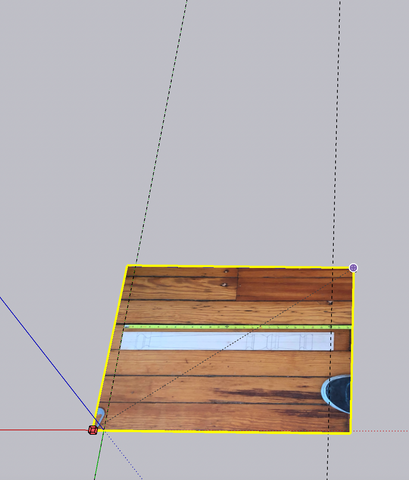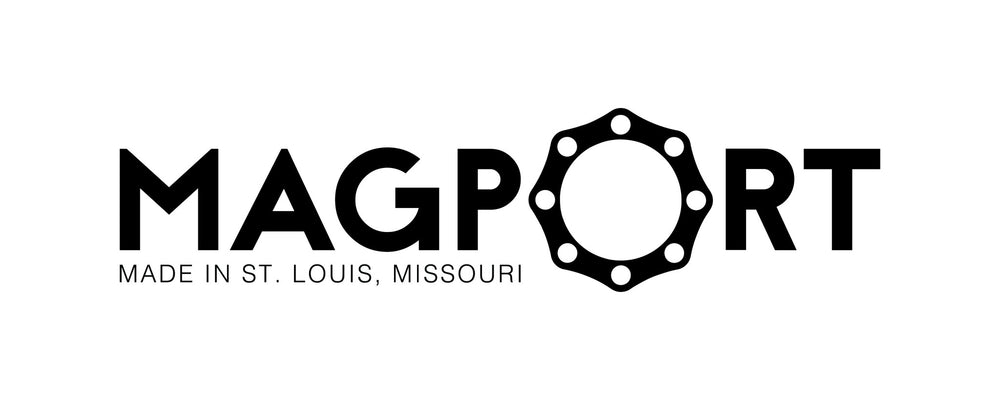To download the .STL file for the pattern holding doodads go here. Thanks for visiting!
Spindles and turnings are found everywhere around us. You know, the ones found on parapets, balustrades, staircases and especially columns that stand outside, and support, many Greek Revival buildings. Sometimes I come across a turning I love and so I'll take a pic and obsess over it later. But now, with these little 3D printed jigs, I'll be far more likely to actually copy the turning so I can maybe try to understand why it's beautiful or make a physical copy at the lathe.
This technique for copying a turning isn't new. I learned it from Phil Lowe around 2005. I have copied dozens of turnings since then but my goal is to turn that to hundreds or thousands and document their origins and at least create a digital 3D drawing so I can enjoy them whenever my eyes need a vacation. This may sound like I'm going overboard but I can't tell you how many times I've missed an opportunity to retain spindles I find amazing.

These jigs mount the pattern material automatically aligning it with the centerline of the turning itself.


The jigs are secured to the turning with zip ties. The right size jig should be used so the zip ties have the best grip.

There is an elongated hole on the jig for a screw or bolt but I found using tape was just fine though I'd prefer double sided tape to blue tape. To make an accurate copy it may be necessary to use a level to plumb the pattern so that the edge you choose to square from is parallel with the centerline of the turning. I did it by eye in this case but wider turnings would amplify inaccuracy in this step.

I start by copying each horizontal that appears on the turning using a square. I'll do that all that up the pattern.

Onto each horizontal I mark the diameters as they relate to the centerline on the pattern. I divide the diameter by 2 and mark that length from the centerline on the pattern.

Once these parameters are copied to the pattern the next step is mostly visual and takes some practice. Drawing the shapes can be tricky and it may be helpful to know some of the basic shapes found on turnings: taper, fillet, cyma recta/reversa, scotia, thumbnail, urn, ovolo, ogee.... There are more but that's all I can think of at the moment. Do you know any?

The pattern needs more work and the lines refined but overall it's ready to be used to copy the turning at the lathe. So that's done. But follow on if you want to see how I create a digital 3D copy in Sketchup.

To create a digital drawing of a pattern I first take a photo of the pattern with a measuring tape visible. I take the photo from a distance to minimize distortion.


Buy Caluanie Muelear Oxidize
Caluanie Muelear 10 Liters
Caluanie Muelear 1.5Liter
Caluanie Muelear Oxidize 1Liter
Caluanie Muelear Oxidize 100Liters
Caluanie Muelear Oxidize 5Liters
Caluanie Muelear Oxidize 50Liters
Caluanie Muelear Oxidize in South Korea
Muelear Oxidize in Uzbekistan
Caluanie Muelear Oxidize for sale
https://caluaniemuelearus.com/product/caluanie-muelear-10-liters/
https://caluaniemuelearus.com/
https://caluaniemuelearus.com/catalog/
https://caluaniemuelearus.com/product/caluanie-muelear-oxidize-100liters/
https://caluaniemuelearus.com/product/caluanie-muelear-1-5-liter/
https://caluaniemuelearus.com/product/caluanie-muelear-oxidize-1liter/
https://caluaniemuelearus.com/product/caluanie-muelear-oxidize-5liters/
https://caluaniemuelearus.com/product/caluanie-muelear-oxidize-50liters/
Falschgeld kaufen online, Gefälschter Euro, Gefälschter Euro Hannover, Falschgeld bestellen, Falschgeld kaufen, Gefälschten Euro kaufen,, order counterfeit money, buy counterfeit money, buy counterfeit euros, buy counterfeit euros in Bavaria, buy counterfeit euros in dortmund, buy counterfeit money Dortmund, buy You can buy fake euros in Cologne, buy fake euros in Cologne, buy fake euros in Düsseldorf, high-quality fake euros online in Düsseldorf, buy fake euros in Stuttgart, buy counterfeit money in Stuttgart, sell euros in Stuttgart. ,sale of counterfeit euro
https://www.falschgeld.org/
https://www.falschgeld.org/https://www.falschgeld.org/product/kaufen-sie-gefalschte-euro-in-dortmund/
https://www.falschgeld.org/product/falschgeld-bestellen/
https://www.falschgeld.org/product/falschgeld-kaufen-dusseldorf/
https://www.falschgeld.org/product/kaufen-sie-gefalschte-euro-in-stuttgart/
chemlabshop-online.com/product-category/our-shop/buy-bath-salt-online/\\r\
chemlabshop-online.com/product…lectors-bath-salts-online/\\r\
chemlabshop-online.com/product/buy-amped-500mg-bath-salt-online/\\r\
chemlabshop-online.com/product…e-500mg-bath-salts-online/\\r\
chemlabshop-online.com/product/concentrated-bliss-500mg/\\r\
chemlabshop-online.com/product/concentrated-disco-multipurpose/\\r\
chemlabshop-online.com/product/concentrated-eight-ballz-bath-salt-500mg/\\r\
chemlabshop-online.com/product…h-500mg-bath-salts-online/\\r\
chemlabshop-online.com/product/concentrated-ivory-dove-bath-salts/\\r\
chemlabshop-online.com/product/concentrated-ivory-wave-bath-salts-500mg/\\r\
chemlabshop-online.com/product/concentrated-ivory-wave-ultra/\\r\
chemlabshop-online.com/product/buy-concentrated-mexxy-500mg-bath-
Looking for the perfect combination of style, performance, and eco-friendliness in an electric bike? Visit the Super73 Electric Bike Shop today! Our extensive collection features premium electric bikes like the Super73-ZX LE, SUPER73-R Adventure Series, and the exclusive Super73-Z Miami SE, all designed to elevate your riding experience.
Whether you’re commuting through the city or exploring rugged trails, our bikes are built for adventure and reliability. At Super73 Electric Bike Shop, we prioritize quality and customer satisfaction, offering competitive prices, flexible financing, and free shipping on select models.
Don’t miss out on the chance to own a high-performance electric bike that suits your lifestyle. Click Super73 electric bikes for sale to explore our latest collection and start your journey towards a greener, more exciting ride today!
Join the community of satisfied riders and embrace the future of biking with Super73 Electric Bike Shop
Visit https://super73electricbikeshop.com/.
https://super73electricbikeshop.com/electric-motorbikes-shop-online/
https://super73electricbikeshop.com/product/oracle-red-bull-racing-r-adventure-series-super73/
https://super73electricbikeshop.com/product/oracle-red-bull-racing-x-super73-z-adventure-series/
https://super73electricbikeshop.com/product/super73-r-adventure-series-core-for-sale/
https://super73electricbikeshop.com/product/super73-r-adventure-series-le-for-sale/
https://super73electricbikeshop.com/product/super73-r-adventure-series-se-for-sale/
https://super73electricbikeshop.com/product/super73-s2-se-for-sale/
https://super73electricbikeshop.com/product/super73-z-adventure-series-core-for-sale/
https://super73electricbikeshop.com/product/super73-z-adventure-limited-edition-for-sale/
https://super73electricbikeshop.com/product/super73-z-miami-core-e-bike-for-sale/
https://super73electricbikeshop.com/product/super73-z-miami-le-for-sale/
https://super73electricbikeshop.com/product/super73-z-miami-se-ebike-for-sale/
https://super73electricbikeshop.com/product/super73-zx-core-e-bike-for-sale/
https://super73electricbikeshop.com/product/super73-zx-le-for-sale/
https://super73electricbikeshop.com/product-category/super73-z-series-bikes-collections/
https://super73electricbikeshop.com/product-category/super73-r-series-bikes-for-sale/
https://super73electricbikeshop.com/product-category/super73-s-series-bikes-for-sale/
xxxxxxxxxxxxxxxxxxxxxxxxxxxxxxxxxxxxxxxxxxxxxxxxxxxxxxxxxxxxxxxxxxxxxxxxxxxxxxxxxxxxxxxxxxxxxxxxxxx
https://blaisetechpro.com/
https://blaisetechpro.com/it-services-near-me/
https://blaisetechpro.com/digital-marketing-agency-in-cameroon/
https://blaisetechpro.com/seo-services-agency/
https://blaisetechpro.com/ppc-management-agency/
https://blaisetechpro.com/best-web-design-agency/
https://blaisetechpro.com/blog-post-ideas-checklist/
https://blaisetechpro.com/it-consulting-company/
https://blaisetechpro.com/best-it-agency-company/
https://blaisetechpro.com/how-does-googles-search-engine-algorithm-work/
https://blaisetechpro.com/how-online-information-is-categorized/
https://blaisetechpro.com/market-research-guide/
https://blaisetechpro.com/web-performance-optimization/
https://blaisetechpro.com/brand-awareness/
https://blaisetechpro.com/search-engine-optimization/
https://blaisetechpro.com/business-software-solutions/
https://blaisetechpro.com/why-every-business-need-a-website-essential-for-success/
https://blaisetechpro.com/best-seo-consultant-in-cameroon/
https://blaisetechpro.com/online-business/
https://blaisetechpro.com/online-business-ideas-to-start-now/
https://blaisetechpro.com/digital-marketing-agency-in-cameroon/
Thank you so much for sharing all this wonderful info with the how-to’s! It is so appreciated!
https://sites.google.com/site/movinmakkah/
https://sites.google.com/site/movinmakkah/moversinmecca
https://sites.google.com/site/movinmakkah/qassim-movers
https://sites.google.com/site/movinmakkah/moversinahsa
https://sites.google.com/site/movinmakkah/jeddah
https://sites.google.com/site/movinmakkah/madina
https://sites.google.com/site/movinmakkah/takhazaynintabuk
https://sites.google.com/site/movinmakkah/movers-in-khulais
https://sites.google.com/site/movinmakkah/movinginjeddah-samer
https://sites.google.com/site/movinmakkah/moving-furniture-in-alkhobar
https://sites.google.com/site/movinmakkah/riyadh
https://sites.google.com/site/movinmakkah/slricom
https://sites.google.com/site/movinmakkah/mecca-movers
https://sites.google.com/site/movinmakkah/taif
https://sites.google.com/site/moversintaif/
https://sites.google.com/site/moversintaif/makkah
https://sites.google.com/site/moversintaif/dammam-movers
https://sites.google.com/site/moversintaif/moversinriyadh
https://sites.google.com/site/moversintaif/moversinqassim
https://sites.google.com/site/moversintaif/furnituremovers-qassim
https://sites.google.com/site/moversintaif/cleaningtabuk
https://sites.google.com/site/moversintaif/cleaningindammam
https://sites.google.com/site/moversintaif/movers-ahsa
https://sites.google.com/site/moversintaif/jeddah
https://sites.google.com/site/moversintaif/riyadh
https://sites.google.com/site/moversintaif/dammam
https://sites.google.com/site/moversintaif/afsh
https://sites.google.com/site/moversintaif/alkhobar
https://sites.google.com/site/moversintaif/almadina
https://sites.google.com/site/moversintaif/tabuk
https://sites.google.com/site/moversintaif/yanbu
https://sites.google.com/site/moversintaif/rabigh
https://sites.google.com/site/moversintaif/jubail
https://sites.google.com/site/moversintaif/najran
https://sites.google.com/site/moversintaif/abha
https://sites.google.com/site/moversintaif/movers-alkharj
https://sites.google.com/site/moversintaif/movers-elbaha
https://sites.google.com/site/moversintaif/jazan-movers
https://sites.google.com/site/moversintaif/moversintabuk
https://sites.google.com/site/moversintaif/Company-numbers
https://sites.google.com/site/moversintaif/cleaninginmedina
https://sites.google.com/site/moversintaif/cleaningindammam
https://sites.google.com/site/moversintaif/cleaning-jeddah
https://sites.google.com/site/moversintaif/clean-makkah
https://sites.google.com/site/moversintaif/cleaning
https://sites.google.com/site/moversintaif/buy-furniture-riyadh
https://sites.google.com/site/moversintaif/furnituremovers-qassim
https://sites.google.com/site/moversintaif/moversinjeddah-abhor
https://sites.google.com/site/moversintaif/transfer-furniture-jeddah
https://sites.google.com/site/moversintaif/furniture-movers-yanbu
https://sites.google.com/site/moversintaif/moversinqassim
https://sites.google.com/site/moversintaif/movers-ahsa
https://sites.google.com/site/moversintaif/buraydah-movers
https://sites.google.com/site/moversintaif/hail-movers
https://sites.google.com/site/moversintaif/jazan-movers
https://sites.google.com/site/moversintaif/moversintabuk
https://sites.google.com/site/moversintaif/Company-numbers
https://sites.google.com/site/moversintaif/khamismushait-movers
https://sites.google.com/site/afashdammam/
https://sites.google.com/site/afashdammam/toqassim
https://sites.google.com/site/afashdammam/transfer-furniture-riyadh
https://sites.google.com/site/afashdammam/takhazayn-aldamam
https://sites.google.com/site/afashdammam/al-hasa-cleaning
https://sites.google.com/site/afashdammam/alahsa
https://sites.google.com/site/afashdammam/movingfurniture-qatif
https://sites.google.com/site/afashdammam/movingfurniture-zahran
https://sites.google.com/site/movingfurnitureinmecca
https://sites.google.com/site/movingfurnitureinmecca/cleaninginmecca
https://sites.google.com/site/movingfurnitureinmecca/gomoom-movers
https://sites.google.com/site/afashdammam/moving-alahsa-to-qassim
https://sites.google.com/site/afashdammam/transfer-furniture-jubail-riyadh
https://sites.google.com/site/afashdammam/furniture-storage-in-jubail
https://sites.google.com/site/afashdammam/moving-furniture-in-jubail
https://sites.google.com/site/afashdammam/Furniture-transfer-dammam
https://sites.google.com/site/afashdammam/Moving-furniture-Dammam-to-Khamis
https://sites.google.com/site/afashdammam/moving-dammam-to-jubail
https://sites.google.com/site/afashdammam/furniture-storage-in-alkhobar
https://sites.google.com/site/movinginmeccariyadh/
https://sites.google.com/site/movinginmeccariyadh/jeddah
https://sites.google.com/site/moversinnajran/
https://sites.google.com/site/moversinnajran/dammam
https://sites.google.com/site/moversinnajran/jubail
https://sites.google.com/site/moversinnajran/riyadh
https://sites.google.com/site/moversinnajran/transfere-riyadh
https://sites.google.com/site/moversalbaaha/
https://sites.google.com/site/moversalbaaha/taif
https://sites.google.com/site/moversalbaaha/dammam
https://sites.google.com/site/moversalbaaha/description
https://sites.google.com/site/moversalbaaha/taiftoelbaha
https://sites.google.com/site/transferjazanjeddah/
https://sites.google.com/site/transferjazanjeddah/riyadh
https://sites.google.com/site/transferjazanjeddah/dammam
https://sites.google.com/site/transferjazanjeddah/habitat
https://sites.google.com/site/movingfurnitureinmakkah/
https://sites.google.com/site/movingfurnitureinmakkah/yanbu
https://sites.google.com/site/movingfurnitureinmakkah/qassim
https://sites.google.com/site/transfertojeddah/
https://sites.google.com/site/transfertojeddah/khamismushait
https://sites.google.com/site/rabighalalameya/
https://sites.google.com/site/rabighalalameya/tabuk
https://sites.google.com/site/rabighalalameya/riyadh
https://sites.google.com/site/rabighalalameya/qassim
https://sites.google.com/site/rabighalalameya/dammam
https://sites.google.com/site/rabighalalameya/mecca
https://sites.google.com/site/rabighalalameya/jeddahtabuk
https://sites.google.com/site/rabighalalameya/cleaninginmedina
https://sites.google.com/site/transferfurnitureyanbu/
https://sites.google.com/site/riyadhjedah/
https://sites.google.com/site/movmakkah/
https://groups.google.com/g/albeetalaamer/c/ZzqtCv4N5fA
https://groups.google.com/g/moving-furniture-in-jeddah
https://groups.google.com/g/albeetalaamer
https://groups.google.com/u/7/g/movingf-urniture-companies
https://groups.google.com/u/7/g/pnn4230
https://groups.google.com/g/moversintaifmovers
https://groups.google.com/g/moversintaifmovers/c/2lFZN8cF9EE
https://groups.google.com/g/movingf-urniture-companies/c/yhhzR5HaXO8
https://groups.google.com/g/albeetalaamer/c/hklX8smpaV8
Thank you so much for sharing all this wonderful info with the how-to’s! It is so appreciated!
https://bit.ly/3o2IBcy
https://bit.ly/3ROv71y
https://bit.ly/3WmrELl
https://bit.ly/4b6aRkc
https://bit.ly/4bqz3xG
https://2u.pw/7p9EBY9
https://2u.pw/yxjqpH4
https://2u.pw/NPKsEsd
https://2u.pw/jVHsVc6
https://2u.pw/FCZK7oT
https://rentry.co/c838re94
https://ko-fi.com/moversintaif
https://moversintaif.edublogs.org
https://rentry.co/c838re94
https://www.reddit.com/r/pnn4230/
https://www.reddit.com/user/PomegranateLife1229/
https://rb.gy/oegdmm
https://rb.gy/8zuqxs
https://rb.gy/tm6krp
https://rb.gy/oegdmm
https://rb.gy/8zuqxs
https://rb.gy/tm6krp
https://justpaste.it/f94vk
https://justpaste.it/f94vk
https://justpaste.it/avn1a
https://justpaste.it/agvkp
https://justpaste.it/c7d5w
https://justpaste.it/a1881
https://justpaste.it/agvkp
https://rentry.co/c838re94
https://ko-fi.com/moversintaif
https://www.pinterest.com/dammam_pmm1
https://medium.com/cleaning-company https://cutt.ly/MwCxTHEc https://medium.com/pnn9299
https://rentry.co/fo3963yc/raw
https://medium.com/pvv9499 https://paste.ee/p/Q0bc3 https://medium.com/pnn6766
https://rentry.co/fo3963yc
https://medium.com/pnn1559 https://rentry.co/c838re94 https://medium.com/jeddahnakl
https://www.behance.net/f7a8a5b3
https://pastebin.com/5cVEFCwd
https://goo.gl/iRWLXB
https://goo.gl/53wgB4
https://goo.gl/fkBcn8
https://goo.gl/W74Wwp
https://goo.gl/MKdvqr
https://www.crokes.com/movinmakkah/info/
https://yamcode.com/dlyl-shrkat-nkl-aafsh-bgd
https://hackmd.io/_Csjh1MqTaum7CUWa8Q3lA?view
https://hackmd.io/moversint/S1uyc369p
https://cutt.ly/4wCjlqaU
https://walling.app/H0nJyJwmmyuK1A2saCBQ/-
https://bitbin.it/lIf4wziu/
https://bitbin.it/BHOujxrS/
https://bitbin.it/v00s5VGQ/
https://commie.io/#NsQEihi9
https://linktr.ee/movinmakkah
https://movinmakkah.livejournal.com/306.html
https://pastebin.com/dVaMZ4Zc
https://paste.ee/p/SFOIM
https://oktob.io/pnn9799
https://oktob.io/posts/81103
https://oktob.io/posts/82001
https://oktob.io/posts/81294
https://oktob.io/posts/81200
https://oktob.io/posts/81107
https://oktob.io/posts/81211
https://taplink.cc/moversintaif
https://www.tumblr.com/movinmakkah
https://paste.myst.rs/cj1uyr2j
https://paste.myst.rs/yaj8vldp
https://pastebin.com/Sm58m4CC
https://rentry.co/movinmakkah
https://www.pastery.net/cmjuct/
https://pastelink.net/2az9iz5u
https://paste.ee/p/rNypS
https://pastelink.net/services%20in%20Taif
https://paste.mozilla.org/m7EM4sUi
https://paste.ee/p/kvMBq
https://paste.rs/Ual13.txt
https://devpost.com/moversintaif
https://www.youtube.com/moversintaif
https://www.pinterest.com/moversintaif/
https://www.pinterest.com/roqaya65/
https://www.wattpad.com/user/jeddahnakl
https://www.wattpad.com/user/linkedmohamed
https://t.co/bEnKpmhOua
https://rentry.co/5qunfauv
https://rentry.co/6szh6378
https://pastelink.net/jv497vbs
https://longbets.org/user/jeddahnakl/
https://rentry.co/v9enh7g6
https://www.instagram.com/mecca_054/
https://paste.ee/p/7nHsj
https://paste.feed-the-beast.com/view/e8c5a8fe
https://rentry.co/owf8z7x6
https://hackmd.io/-HiH-TvPQQG4zUUI0Il3eA
https://hackmd.io/YJc4k7QiRlGBTxSH_ix6Hg
https://hackmd.io/@movinmakk/r1WjXP-jp
https://hackmd.io/_Csjh1MqTaum7CUWa8Q3lA
https://hackmd.io/@movinmakk/HknekCQpa
https://is.gd/zMEJDl
https://is.gd/bdIzKb
https://is.gd/IkUfsB
https://is.gd/nXlMSI
https://is.gd/zfkyFq
https://is.gd/U1BdUe
https://linkr.it/1mFylz
https://linkr.it/4pMGZz
https://linkr.it/297s0K
https://linkr.it/4nuVcO
https://linkr.it/13sKd3
https://simp.ly/p/3ZbFV2
https://tinylink.net/3AQsw
https://tinylink.net/I9O0u
https://tinylink.net/PzN7W
https://tinylink.net/9atci
https://paste.kodi.tv/uginopizob
https://rentry.co/622f8cod
https://hackmd.io/Z0CQDnGeQGGWjwLYPiqHkg
https://bandori.party/user/192402/bbnn7592/
https://dojour.us/u/pnn9299
https://dojour.us/e/24030-/preview
https://www.mixcloud.com/pnn9299/
https://about.me/moversintaif1
https://www.furaffinity.net/user/moversintaif/
https://taplink.cc/moversinqassim
https://rentry.co/moversintaif
https://hackmd.io/@MoversinJeddah/SJlHOO4MA
https://movinmakkah.livejournal.com/
https://hackmd.io/@moversint/rkUC41_yJe
https://mastodon.social/@jazanmovers
https://www.tumblr.com/transferfurniturejeddah
https://rentry.co/6wv78gdb
https://hackmd.io/@moversint/BJ5PIGX70
https://ln.run/y2ztq
https://kagitumbahs.webnode.page/guestbook/
https://pastelink.net/v864u2wf
https://rentry.co/yn62aq7y
https://rentry.co/9gokq9qx
https://rentry.co/e975iq3q
https://bitbin.it/Ufe2Mip4/
https://bitbin.it/9aZeYGuP/
https://rentry.co/ceqb9ea5
https://hackmd.io/LlP4bDsuSyujt0cJ19V8vA
https://taplink.cc/naqel_afsh_taif
https://rentry.co/7r4tqvn9
https://rentry.co/tuwczb25
https://rentry.co/bxm67g24
https://rentry.co/gwpyq7ne
https://heylink.me/pnn6766/
https://lit.link/en/moversintaif
https://rentry.co/vih6yuf2
https://hackmd.io/moversint/SJRE9w2k1e https://hackmd.io/moversint/SyXWIT6J1l
https://rentry.co/v2qb2uqx
https://hackmd.io/movinmakk/SyR0s2-x1x https://rentry.co/5i9guay5 https://hackmd.io/movinmakk/rkwepQQe1x
https://rentry.co/7wodmhgh
https://hackmd.io/wuyXmYbdSxOJ54ZtXeJqAw